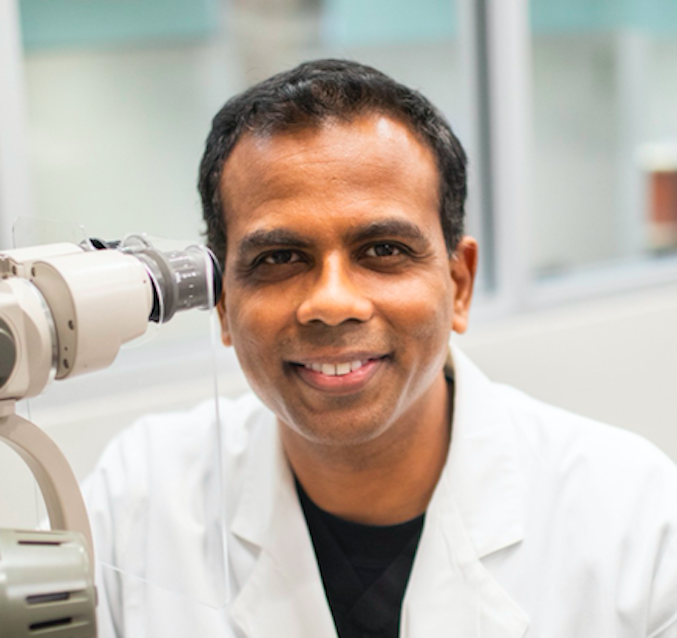Dr. Sai Chavala has discovered how to transform skin cells into retinal cells and give sight to those suffering macular degeneration. But that’s just for starters. His innovation could change the way medicine fights disease. You read that correctly.
Chavala is an ophthalmologist at Kleinman Evangelista Eye Centers of Texas and a professor of surgery at the TCU and UNTHSC School of Medicine. His father was an ophthalmologist but he never thought he would end up in the profession. And with his research, he may end up changing not just his profession but the medical profession as a whole. “Macular degeneration is unfortunate in that there was no therapy that I could offer my patients to see again,” Chavala says. “I realized that doing science would allow me to impact more than just the patients that I treated on a day-to-day basis. I could potentially impact millions of people.”
The breakthrough research uses a chemical compound to trigger skin cells’ genes, transforming them into retinal cells. In theory, this has monumental implications. It means one could transform the skin cells into any cell that was needed or damaged. Chavalas’ research focuses on addressing vision loss caused by macular degeneration when photoreceptor cells in the retina are lost with age. The disease impacts more than 10 million Americans, especially the elderly, and there is no treatment for the type of macular degeneration that is addressed with this procedure.
Skin cells are readily available and contain all the traits of any cell, but the genes that would make the cell a liver, heart, or retina are inactive. Chavala’s research is a workaround from the more controversial procedure that uses embryonic skin — or stem — cells to create new varieties of cells. His work directly converts the skin cells into the desired cell. In this case, that is a retinal cell that is injected into the eye and restores vision. Converting cells into stem cells and then to the desired cells can take six months or longer, while Chavala’s process takes just 11 days.
“We kind of leapfrogged the whole stem cell stuff,” Chavala said. “It’s faster, it’s less expensive, and you’re directly getting the cell that you want.”
The research has successfully transformed skin cells into cells that can sense light in mice. Chavala has received funding to launch a CIRC Biosciences, Inc. to launch the technology out of the lab and into the clinical world. Next, he will seek approval from the Food and Drug Administration, which will involve drug trials that could take two to three years.
Chavala sees his advancement applied to many cell types and is thinking ahead about future applications. “We’re very excited about finding either different concentrations of the same molecules or additional molecules that we can add to our little cocktail to get different cell types,” he says.
The research was originally published in Nature in April.





